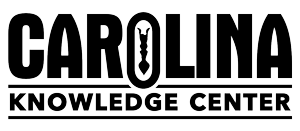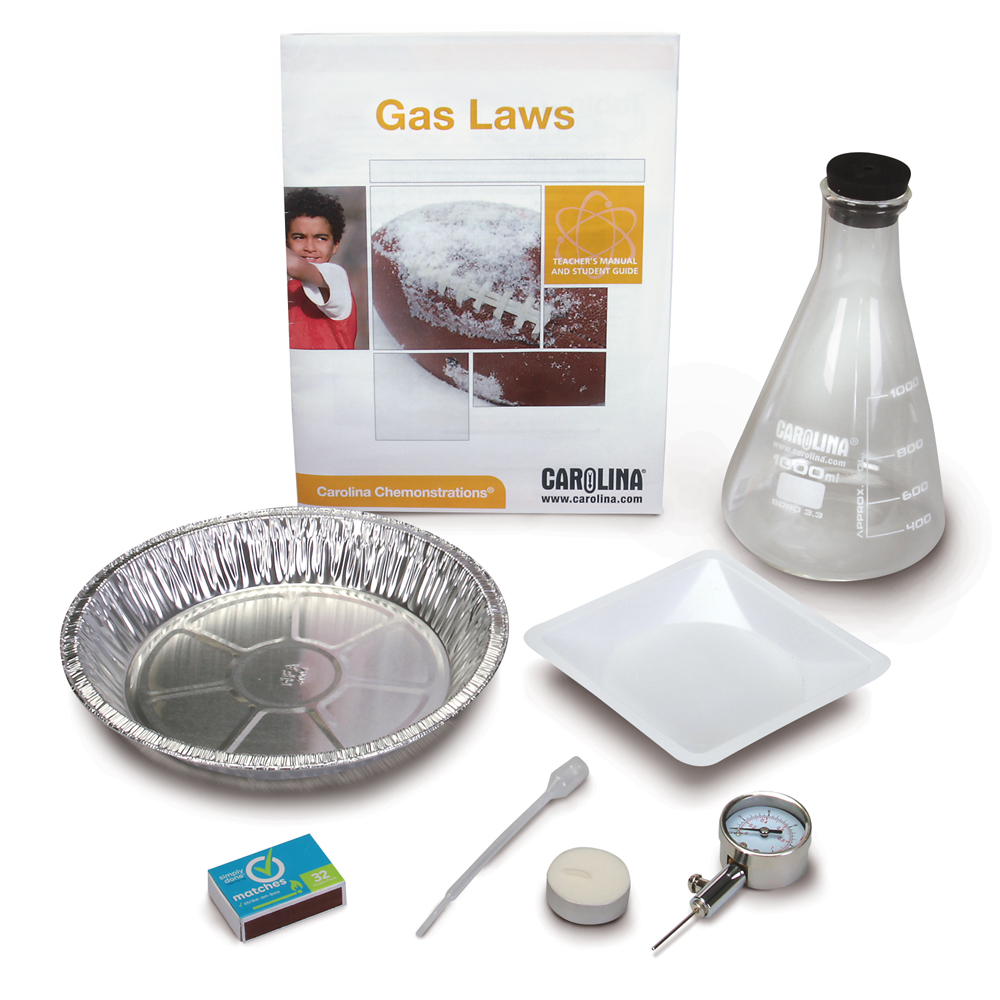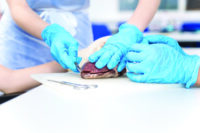Popcorn: Visualizing the Kinetic Molecular Theory
A Carolina EssentialsTM Investigation

Total Time: 50-75 mins
Prep: 20-30 mins | Activity: 30-45 mins

Physical Science, Chemistry
9-12
High School
- Total Time: 50-75 minutes [ Prep: 20-30 mins | Activity: 30-45 mins ]
- Subject: Physical Science, Chemistry
- Grade: High School
Overview
Popcorn is a great real-world example and science phenomenon to use when discussing the kinetic molecular theory of gases, the phase change of water from a liquid to a gas, Gay-Lussac’s gas law (pressure directly related to temperature), Charles’ law (volume and temperature directly related), or the ideal gas law (PV = nRT). After covering the KMT and gas laws in class, complement the lesson with a student-designed inquiry activity using several brands of popcorn, both bag and microwave varieties to examine and explain the phenomenon of popping corn.
When a popcorn kernel is heated, the trapped water in the endosperm turns into steam, building up pressure inside the pericarp to more than 9.0 atm. This pressurized, super-heated steam transforms the soft starch in the endosperm into a gelatinous material. The pericarp ruptures, releasing the steam and gelatinous starch that solidifies upon cooling. The resulting popped kernel is 40 to 50 times its original size. The optimum moisture level for popcorn is 14%, below that value, the size of the popped kernels is smaller and the number of kernels that pop decreases.
Phenomenon
Students observe popping corn.

Essential Question
How do the kinetic molecular theory and gas laws explain why popcorn pops?
Investigation Objectives
- Design and conduct an experiment to determine the percent of water by mass in a sample of popcorn.
- Use the kinetic molecular theory and gas laws to construct a model explaining why popcorn pops.
Next Generation Science Standards* (NGSS)
HS-PS3-2. Develop and use models to illustrate that energy at the macroscopic scale can be accounted for as a combination of energy associated with the motions of particles and energy associated with the relative positions of particles.
SCIENCE & ENGINEERING PRACTICES
Developing and Using Models
- Develop and use a model based on evidence to illustrate the relationships between systems or between components of a system.
DISCIPLINARY CORE IDEA
PS3.A: Definitions of Energy
- Energy is a quantitative property of a system that depends on the motion and interactions of matter and radiation within that system. That there is a single quantity called energy is due to the fact that a system’s total energy is conserved, even as, within the system, energy is continually transferred from one object to another and between its various possible forms.
- At the macroscopic scale, energy manifests itself in multiple ways, such as in motion, sound, light, and thermal energy.
- These relationships are better understood at the microscopic scale, at which all of the different manifestations of energy can be modeled as a combination of energy associated with the motion of particles and energy associated the configuration.
CROSSCUTTING CONCEPTS
Energy and Matter
- Energy cannot be created or destroyed; it only moves between one place and another place, between objects and/or fields, or between systems.
Materials
- Beaker, 250 mL
- Graduated cylinder, 10 or 25 mL
- Wire gauze
- Support stand (with iron rings)
- Bunsen burner or
- Hot plate
- Weighing boat
- Balance
- Have these materials available at a central location:
- Popcorn (several brands—bag and no-butter microwave)
- Cooking oil
- Disposable plastic pipets
- Aluminum foil (for loosely covering the beakers)
Safety Procedures and Precautions
Students should wear goggles and aprons or lab coats during the activity and exercise due caution around Bunsen burners or hot plates. Inform students that cooking oil boils at a higher temperature than water (225° C), and have them cover their beakers with aluminum foil to contain the popping corn and boiling oil.
Note: Remind students not to eat any of the popcorn produced in the lab.
Teacher Preparation and Disposal
To save time, you may wish to pre-count popcorn kernels and have them in a labeled cup ready to hand out to students. Dispose of the popped corn in the trash. All glassware will need to be washed with detergent and hot water to remove the oil.
STUDENT PROCEDURES
- Given the materials available to you, design an investigation to determine the percent by mass of water in popcorn. In your experimental design include: a hypothesis, materials list, procedures, data table, analysis methods, and error analysis method.
Have your teacher approve the steps of your procedure before beginning. (Teacher signature)
- Hypothesis
- Materials
- Procedures
- Data
- Analysis
- Error Analysis
- Conduct the experiment, record the data, and complete the analysis.
- On a class data table, record the percent by mass of water and the type of popcorn you used, bag or microwave.
TEACHER PREPARATION AND TIPS
- Review the steps for calculating percent mass and the gas laws before students begin the design process.
- Assign each group either bag or microwave popcorn. If time permits, each group can do both.
- Check student procedures for steps leading to the calculation of % mass of water. (Initial mass-popped mass)
- Check for a step that keeps the popcorn in the beaker but allows the water vapor to escape. During popping, make sure that any kernels that may pop out of the beaker are weighed.
- Sign or stamp every procedure when complete. It may take several attempts to get a workable procedure.
- Error analysis should be a %error calculation. The standard or accepted value for the %water is in the student background section. (14% water by mass)
Data and Observations

Analysis & Discussion
What is the percent by mass of water in your sample of popcorn? Show your work and include all units.
% of water in kernels = water lost ÷ mass of kernels × 100
0.20 g ÷ 2.10 g × 100 = 9.5%Compile the class data and calculate the mean water percentage for bag popcorn and microwave popcorn.
Student answers will vary depending on the values submitted by groups. Students may need to be reminded of how to calculate mean or average.
Use the class data to explain any differences between bag and microwave popcorn.
Check the averages. There will likely not be significant differences in percent mass when comparing the types of kernels. The corn kernels are of the same variety but packaged differently.
Use the kinetic molecular theory, gas laws, and class data to construct a model explaining why popcorn pops.
Popcorn kernel is heated → KMT: heat added, temperature increases, KE increases, particle motion increases
Trapped water in the endosperm turns into steam → KMT: heat added, boiling point of water is reached, phase change from liquid water to steam, heat of vaporization is absorbed so liquid water turns to steam, gas laws apply
Pressure inside the pericarp increases → Gay-Lussac’s law: as temperature increases, pressure increases; Charles’ law: as temperature increases, volume increases (combined gas law can also be stated)
Pressurized, super-heated steam changes the soft starch into a gelatinous material → KMT: heat is added, particle motion is increased, allowing the steam to mix with the starch, creating a gelatinous material
Pericarp ruptures → KMT: structural failure of the pericarp resulting in the loss of steam/water molecules
Steam is released Ideal gas law: amount of water molecules decreases, moles of water decrease, and the quantity of (PV/T) decreases
Heat source is removed → KMT: temperature decreases, KE decreases, particle motion decreases
Gelatinous starch cools and solidifies → 2nd Law of thermodynamics: thermal equilibrium is reached, popcorn is a room temperature
Written descriptions, particle diagrams, flow charts, or procedural sketches may all serve as models.
SHOP THE KIT
SAFETY REQUIREMENTS
- Safety Apron Required
- Safety Goggles Required
- Safety Gloves Required
REFERENCE KITS
HELPFUL LINKS
VIEW MORE ESSENTIALS
*Next Generation Science Standards® is a registered trademark of Achieve. Neither Achieve nor the lead states and partners that developed the Next Generation Science Standards were involved in the production of, and do not endorse, these products.




